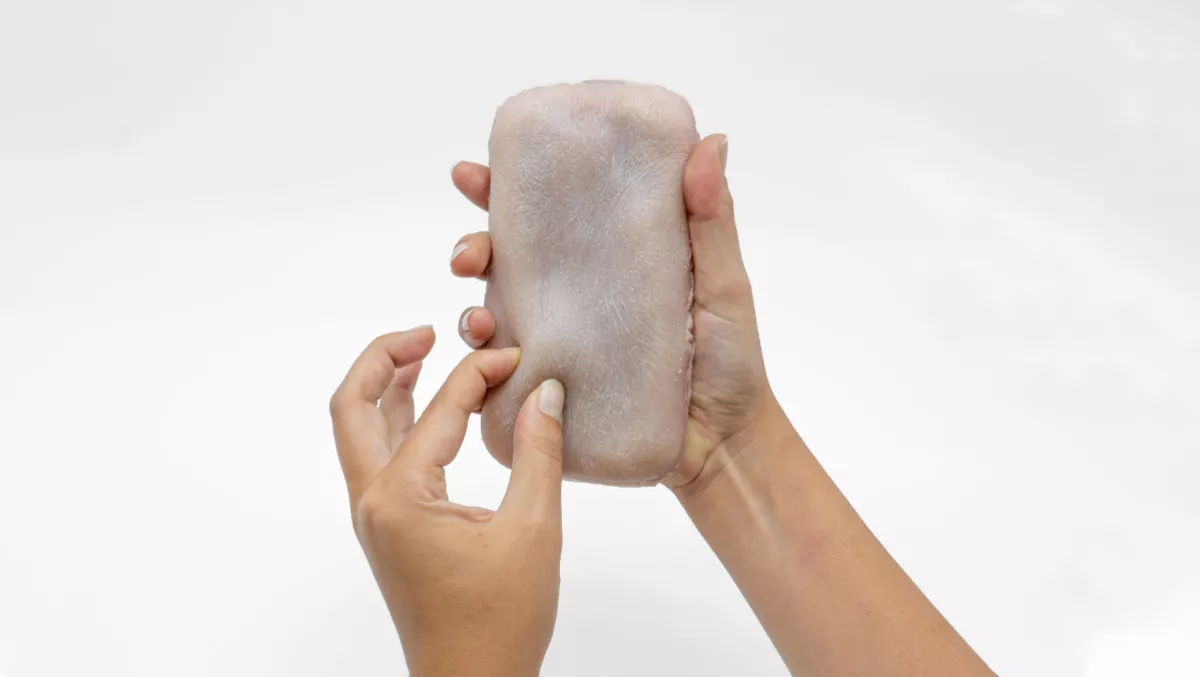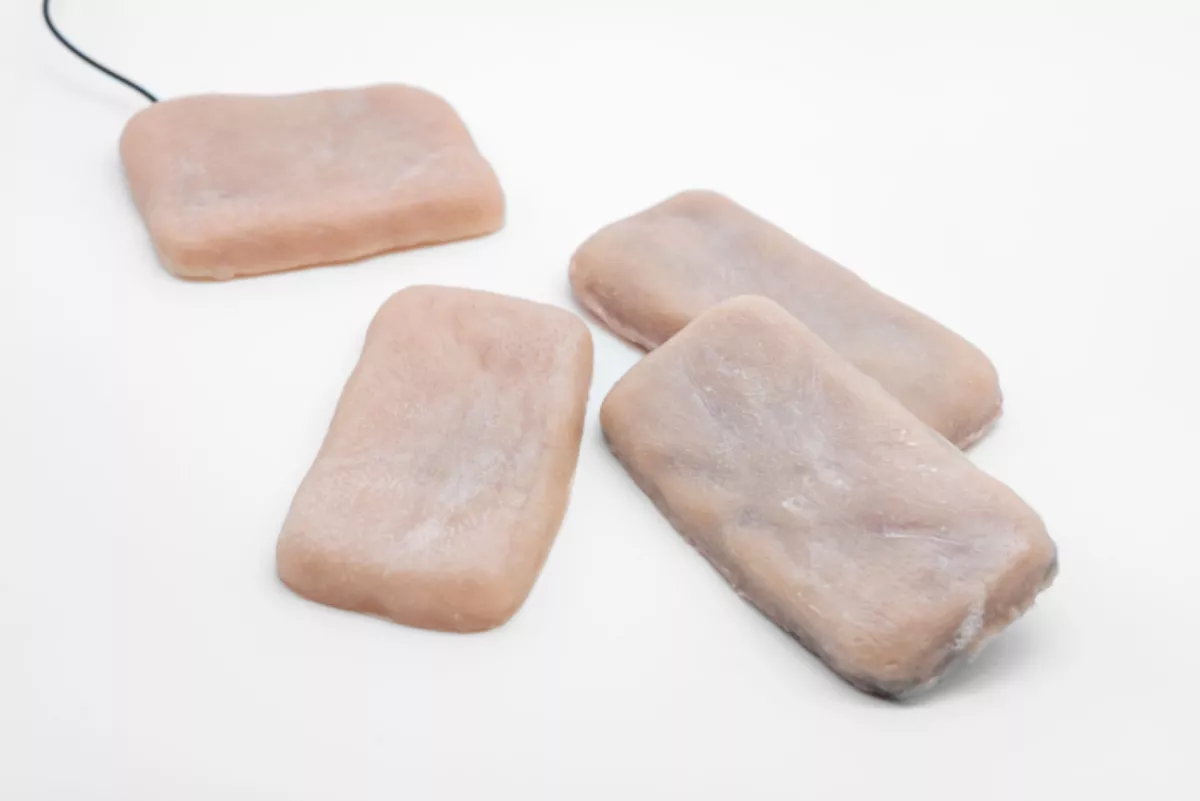
No joke - researchers have created 'caressable' artificial skin
If you feel like pinching, tickling, or dare we say, 'caressing' the devices you use every day, it seems you're not alone – because UK and French researchers have designed a synthetic skin that literally reacts to touch.
Researchers at the University of Bristol, Telecomm ParisTech and Sorbonne University developed the skin by using a multi-layer silicone membrane. The membrane includes a hypodermis layer, a layer of conductive electrode threats, and a surface textured layer.
All of these allow the 'skin' to detect gestures and touches such as tickling, caressing, twisting and pinching – as well as being able to detect users' pressure and location touches.
Now, we know the skin kind of looks like a slab of raw chicken, and we know there are plenty of 'uses' that spring to mind for such a skin – but the researchers have a pretty tame explanation as to why this skin is such a big deal.

"This is the first time we have the opportunity to add skin to our interactive devices. The idea is perhaps a bit surprising, but skin is an interface we are highly familiar with so why not use it and its richness with the devices we use every day?" says University of Bristol associate professor in human-computer interaction, Dr Anne Roudaut.
Researcher and lead author Marc Teyssier adds that artificial skin has been widely studied within robotics, but not in this way. It was focused on safety, sensing, or cosmetic goals.
"This is the first research we are aware of that looks at exploiting realistic artificial skin as a new input method for augmenting devices.
What they mean is that people could put this skin on a smartphone – and that's exactly what the researchers did.
They created a phone case, computer touch pad and smart watch to demonstrate how touch gestures on the Skin-On interface can convey expressive messages for computer mediated communication with humans or virtual characters.
"One of the main use of smartphones is mediated communication, using text, voice, video, or a combination. We implemented a messaging application where users can express rich tactile emotions on the artificial skin. The intensity of the touch controls the size of the emojis. A strong grip conveys anger while tickling the skin displays a laughing emoji and tapping creates a surprised emoji, says Teyssier.
![]()
"This work explores the intersection between man and machine. We have seen many works trying to augment human with parts of machines, here we look at the other way around and try to make the devices we use every day more like us, i.e. human-like," adds Dr Roudaut.
The researchers say they now want to make the skin even more realistic with things like hair, and even temperature sensors that can trigger goosebumps – in both the skin, and those who interact with it.


